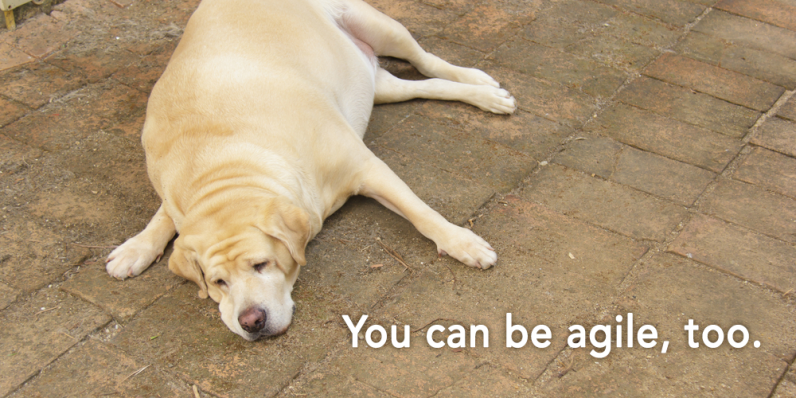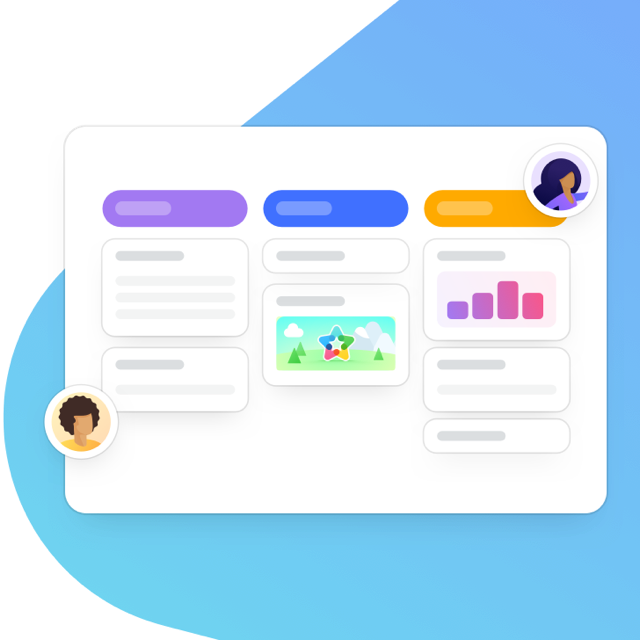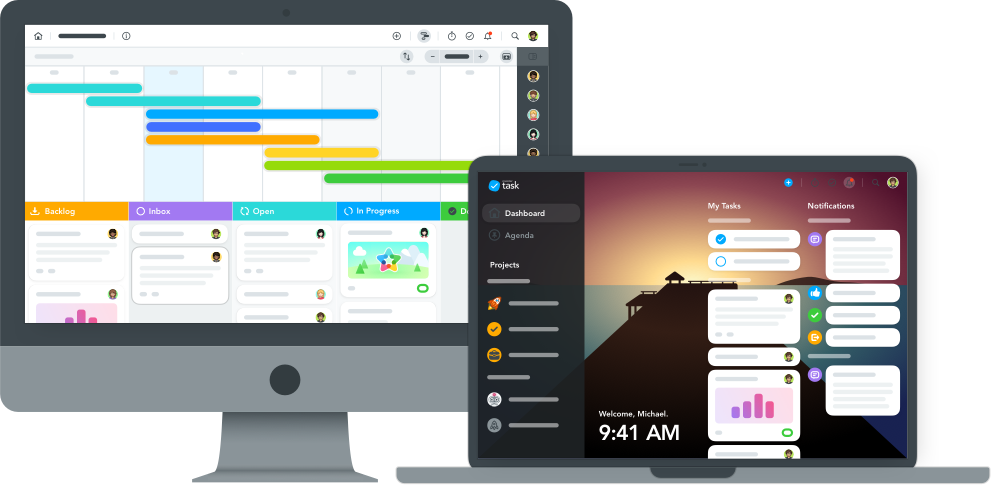If you’ve heard about Agile project management, you’ve most likely heard about it in the context of software development. True, a first look at the Agile manifesto might have you convinced that the Agile approach is strictly for development experts. You know, those colleagues who have you asking “what language are you speaking?” when they talk about their work (a question that can result in even more confusion when you get an answer like “HTML/CSS”).

While Agile may have been created with software in mind, it offers a fantastic collaborative method of managing work that is applicable across a range of industries and project types. The beauty of Agile project management lies in its potential to deliver value at every phase while remaining flexible and open to change.
Agile thus addresses a conundrum that many industries face: How can we maintain controlled development and implementation, while also promoting innovation and creativity? Read on to find out how you can take advantage of this approach and apply Agile project management strategies to non-software projects. It’s simpler than you might think.
Agile What?
First off, a word on Agile project management and just what it entails—for the less technically inclined among us. Established in 2001, Agile was developed as a step-by-step approach to software delivery. Instead of trying to put all the pieces together for one single final product delivery, Agile project management encourages iterative development. Projects are divided into “user stories”—small pieces of user functionality—which are then prioritized and delivered in short cycles known as iterations.
A user story could entail a piece of functionality like being able to “find friends” through a software tool or enabling its ability to print overview reports. A user story can be implemented into an iteration of a software product but that doesn’t mean it will necessarily remain in place permanently. Whether or not it does depends largely on how users respond to that piece of functionality once it has been implemented. As you can probably guess, the Agile process requires ongoing communication—between the different experts who are working together to create the software, as well as between the developers and users who provide feedback on iterations.
This makes way more sense than spending a great deal of time and money to create a final product without user input on the way, right? It’s one of those ideas that, in retrospect, seems so self-explanatory that it leaves everyone thinking, “Why haven’t we been doing this all along?” That’s the logic behind Agile project management—and it’s logic that certainly applies to a range of projects beyond software development. So how can we apply the Agile approach to non-software projects?
Individual Tasks, Individual People, Intersecting Interactions
If you’re working on a project, you’ll likely start off with a to-do list of the steps you need to move that project ahead towards its end goal. That end goal could be a product, an advertisement, an event—the options are endless. By breaking up the big tasks you need to accomplish to reach that goal into smaller, manageable to-do items, you can more easily prioritize and assign tasks to team members. The first incremental steps of progress that result can be tracked, measured and shared with fellow team members, representing the first “iteration” of your non-software project’s development.
A task management tool like MeisterTask allows you to create lists like these to organize your workflow, and assign tasks and due dates to team members while tracking progress. The open nature of an Agile project management approach requires more flexibility than simply giving someone a task, however. That’s why MeisterTask also allows team members to comment on tasks and to invite input from additional team members—and, thanks to MeisterTask being completely web-based, this can all be done in real-time.
Productive Collaboration on a Continual Basis
An essential element of Agile projects is collaboration among team members on an on-going basis, not just in the early brainstorming phases of a project. For software developers, user input on new functionality is essential to determining future iterations. For non-software projects, the input of different experts working together towards a common goal is just as important to ensuring positive project development. By allowing team members to comment in real-time, Agile-inspired workflows encourage creativity and help a project evolve positively.
MeisterTask further taps into the collaborative nature of Agile workflows with its possible integrations. MeisterTask integrations allow you to connect your favorite tools like Zendesk, GitHub, and Slack, among others. The integration with Zendesk, for example, allows you to create tasks for MeisterTask directly from Zendesk. Once the task is completed, you’ll receive a private comment. Or you can connect on Slack, communicating via the messaging app and creating new tasks directly via chat. Needless to say, MeisterTask can also be integrated with the collaborative brainstorming app MindMeister, allowing you to seamlessly transition from brainstorming to creating actionable task lists to realize a project’s completion.
Repeat and Review, Repeat, and Review, Repeat and Review
The iterative nature of Agile project management relies on creating new repetitions of software, updated each time with changes to user stories on a continual basis. Apply this concept to non-software projects by pinpointing recurring steps and setting them to repeat automatically. This encourages consistency and efficiency in the work process, while also forcing you to constantly revisit—and, just as importantly, to reconsider—basic elements of your non-software project.
With Section Actions, MeisterTask allows you to automate recurring steps in your task management workflow. Maybe you work in online marketing and you have an SEO pro in your team who reviews all content before it goes on your website. You can automate the assigning of tasks on a recurring basis so that, for instance, any website content review is automatically assigned to your SEO pro. If a specific action is configured for one project section, you can even automatically apply this action to all tasks in this section.
Adapt Against Risk
Applying Agile project management strategies to non-software projects addresses a fact that most of us in the working world don’t like to discuss: Most projects have an inherent element of risk involved. The best way to negotiate risk and combat potential failure is to be open to evolution in the project development process. By promoting individual accountability and interaction, supporting collaboration, and encouraging repetition and review, Agile project management provides an adaptive framework for non-software project development.
Making costly long-term project plans is tricky and deters project managers from adapting after significant time, when money has already been invested into a process. A complex non-software project can thus better conquer risks with an adaptive Agile approach. Coming back at the Agile manifesto, if you just ignore the software-specific language, its application value to effective project management of all kinds becomes clear:
- Individuals and interactions over processes and tools;
- Working software (Let’s replace that with “Deliverables with value”) over comprehensive documentation;
- Customer collaboration over contract negotiation;
- Responding to change over following a plan.
Don’t Be Shy, Be Agile
Considering the above, it becomes obvious that Agile-inspired workflow strategies and tools apply well beyond software development. Don’t forget, the LEAN method of project management was originally used in industrial processes. Who would have thought that a process once used primarily in auto manufacturing would be applicable in the office? It took innovative and open minds to see that potential—and to dare suggest putting LEAN into practice in an office environment. No doubt, the proposal was initially met with skepticism. Today, however, LEAN is used in many office environments.
So don’t shy away from the Agile approach! By using Agile delivery for non-software projects, you’re promoting your team’s ability to remain creative while delivering concrete value. This is exactly what keeps people enthusiastic about their work and when people are excited about the work they’re doing, you’ll get the best ideas and greatest results.

For more information, download our free white paper Staying Agile: 5 Best Practices in Software Project Management




